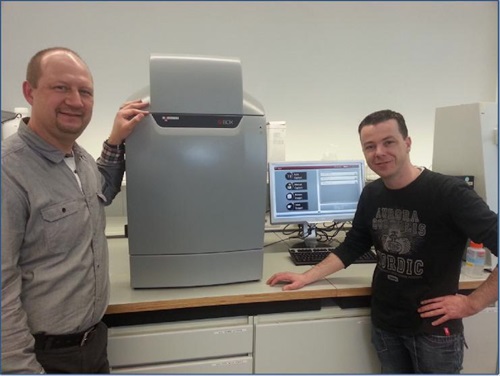Members Login

Channels
Special Offers & Promotions
Syngene's G:BOX Chemi used in Microbial Research at Wageningen UR, The Netherlands to Contribute to Understanding how Bacterial Immune Systems Function
Syngene, a world-leading manufacturer of image analysis solutions is delighted to announce that one of its G:BOX Chemi imaging systems is being used at the Wageningen UR (University & Research centre) to visualise and analyse bacterial proteins as part of a research programme to understand the molecular mechanisms behind bacterial immune systems.
Scientists in the Laboratory of Microbiology at Wageningen UR are using a G:BOX Chemi system to accurately image both chemiluminescent and fluorescently labelled Western blots of multi-functional protein complexes belonging to the CRISPR/Cas proteins. These proteins degrade foreign DNA, thus protecting bacteria from infection and by studying them, the scientists hope to unravel how bacterial immune systems function. Determining pathways of bacterial immunity could lead to a number of applications, such as being able to immunise industrially important bacteria used in food production and large-scale fermentations against phage infection.
Raymond Staals, a Researcher at Wageningen UR said: “We undertake RNAi studies and then assess protein expression on Western blots. However, performing chemi blots in our facility used to be such a hassle as we’d have to develop X-ray films and then take photos. We decided it needed to be simpler so tried using a laser-based scanner but this was limited to chemi blots and it was complicated to work with as we weren’t given any instruction on how to use it.”
Staals continued: “We want to work with fluorescent and chemi Westerns and need a system which can analyse a whole range of different dye types. We looked at two CCD-based imagers and decided on the G:BOX Chemi because the system is very user-friendly as the GeneSys software guides you through everything. We currently use the G:BOX Chemi regularly to image agarose and acrylamide DNA or RNA gels and sometimes to image plate-assays of bacteria expressing fluorescent luciferase. The system is very popular as many other researchers and students come to use the G:BOX Chemi to image DNA gels now instead of using our old gel doc as the quality of the images is so much better.”
Laura Sullivan, Syngene’s Divisional Manager concluded: “We are pleased to discover the Laboratory of Microbiology at Wageningen UR has chosen Syngene’s system to be part of their specialist microbial genetics programme. Their work demonstrates that a G:BOX Chemi multi-functional image analyser is ideally suited for use by students and experienced scientists alike and is versatile enough to be used with confidence to produce great results regardless of the blot or gel type used.”
more about the G:BOX Chemi system
Media Partners



